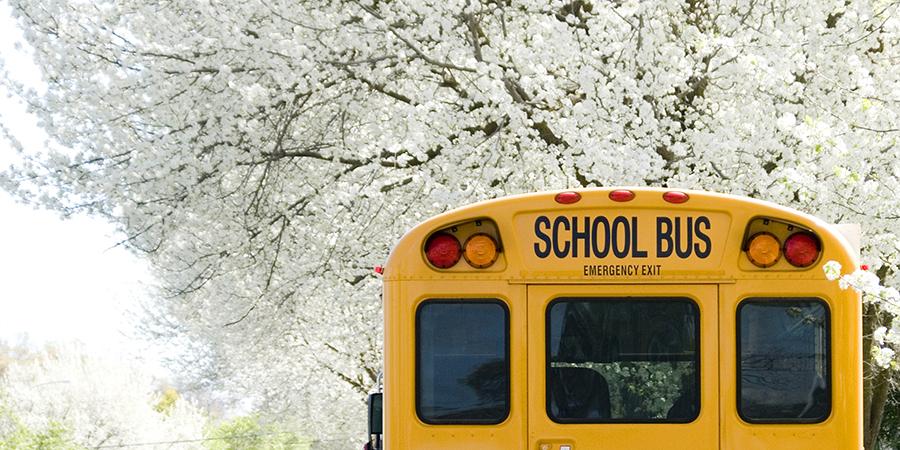Virginia School Data
View all population data
School-Age Population Estimates
- School Division Estimates (July 1, 2023) | View our methodology
- Town Estimates (July 1, 2023) | View our methodology
- Hamilton Lombard: hamilton.lombard@virginia.edu | contact for questions and feedback
School-age population estimates are required by the Code of Virginia to distribute sales and use tax among the school divisions of Virginia. These data, produced annually by the Weldon Cooper Center, estimate the current 5- to 19-year-old population of each school division and town in Virginia. Each year, 1.125% of the state sales and use taxes is distributed to Virginia’s 135 school divisions according to these data.
- Review and Inquiry Process
All estimates are provisional until September 30th of each year when they become final.
The Weldon Cooper Center school-age population estimates are based on a carefully developed methodology for estimating those persons ages 5-19 in Virginia school divisions and towns. School division, locality, or town representatives wishing to request a revision to the estimates are encouraged to read the Methodology documents as a first step: https://coopercenter.org/virginia-school-data
Once you have reviewed the estimates and the appropriate documents, you may request a revision to the school-age population estimate if any of the following three circumstances apply:
- Your division, locality, or town representatives derive substantially different estimates of the local 5-19 population, and you can provide credible and verifiable supporting data showing public-school, private-school, and home-schooled enrollment counts.
- Your division, locality, or town representatives have identified an error in the school-age population estimate input data or computation.
- Your division, locality, or town representatives have challenged the 2010 decennial census count through the Count Question Resolution Program and have received notice from the United States Census Bureau of a change to that count. Because Cooper Center estimates are benchmarked on the decennial census, this additional information is critical for our method.
Notify the Weldon Cooper Center by September 30 if you have questions about an estimate or feel a revision of an estimate is necessary. Please do not submit supporting data until you have discussed the data requirements with us. After September 30, the estimates will be considered final and will be used to allocate to school divisions 1.125% of the state sales and use tax and to apportion allocation of the local option sales tax. The contact person is Hamilton Lombard: hamilton.lombard@virginia.edu.
School Enrollment Projections
- School Enrollment Projections data | April 15, 2024
- Zach Jackson: ten2se@virginia.edu | contact for questions and feedback
- Methodology | web-friendly version below
In January 2024, the Weldon Cooper Center released its first round of school enrollment projections for Virginia’s 131 divisions by grade for the next five years.
These projections are based on birth trends and past school enrollment. The pandemic, however, significantly impacted many school divisions and certain grades (particularly kindergarten and lower grades). The sudden drop of of more than 45,000 students in Virginia’s public schools in 2020 considerably changed the trajectory of pre-covid trends and posed a challenge to projecting school enrollment for the next five years. View our methodology document to understand how we accounted for the pandemic’s impact when developing our projections.
This iteration of our school enrollment projections was released on January 16, 2024. A three-month review period extended to March 31, 2024, in which we invited school divisions to review these projections and provide feedback. Projections were then adjusted and a final version was published on April 15, 2024.
- Why Enrollment Projections Are Important
School enrollment projections help school leadership anticipate upcoming need for classrooms, teachers, and materials, and influences capital construction, school district alignment, bus routes, and the efficient operation of school divisions. Developing projections that are uniform across divisions and making them freely available regardless of divisional funds is critical for planning in Virginia’s public schools.
- Methodology
This document describes the methodology used by the Cooper Center to project K-12 public school enrollment for each of Virginia’s school divisions by grade for the next five school years, 2024-2028.
Input Data
School enrollment projections require the use of fall membership counts and birth data. Historical and current fall membership counts record the number of students enrolled in each school division as of September 30th. These data are obtained from the Virginia Department of Education (VDOE). Birth data, obtained from the Virginia Department of Health are used to project kindergarten enrollment. Cooper Center demographers geocode the residence address of each birth mother to ensure that birth data have been assigned to the correct localities.
Grade Progression Ratio (GPR) Method
School enrollment projections use past school enrollment trends to forecast future school enrollment, under the assumption that these trends are likely to continue in the near future. Grade progression ratios (GPRs) reflect enrollment trends by measuring the rate at which cohorts of children progress from one grade to the next. GPRs are determined by dividing the number of children enrolled in a particular grade by the number of children enrolled in the previous grade and school year. The kindergarten ratio represents the rate at which kindergarten-eligible children (typically at least 5-years-old at the beginning of a school year) enrolled in kindergarten. This ratio is determined by dividing actual kindergarten enrollment by the number of children born within a school division’s jurisdiction five years prior. For example, 2024 Kindergarten GPRs were determined by dividing 2023 kindergarten enrollment by the number of children born in 2018.
GPRs capture the impact of school transfers, migration, dropouts, and deaths. GPRs greater than 1.0 mean that the number of students enrolled in a grade is greater than those of the previous grade one year prior. Alternatively, GPRs less than 1.0 indicate that fewer students progressed from the previous grade into the next grade. Year-to-year fluctuations in GPRs can obscure school enrollment trends. Therefore, multiple GPRs are often combined into a single measure to “smooth” these fluctuations.
Control Totals
Projecting school enrollment at the state level typically yields a more accurate and reliable enrollment forecast than at the school division level. Therefore, division-level grade projections are controlled to state totals by applying adjustment factors that marginally lower or increase the number of projected students. The combined effect of these small adjustments makes the sum of all division-level projections for a given grade match the corresponding state total.
Adjustments
The pandemic created an unprecedented challenge to projecting school enrollment. In fall 2020, Virginia public schools experienced a sudden drop of nearly 50,000 students. Recovery has been slow for many school divisions, which makes the trajectory of school enrollment uncertain. As of fall 2023, nearly 40,000 fewer students were enrolled in Virginia public schools compared to fall 2019. At the same time, enrollment in full-time, virtual schooling programs grew during and after the pandemic, which posed another challenge to projecting school enrollment. These two pandemic-induced factors required the following adjustments to the standard grade progression ratio methodology detailed above:
- We excluded GPRs derived from 2020 enrollment data, as the sudden decline in fall 2020 enrollment resulted in many outlier GPRs that would distort projected trends. In lieu of using affected ratios, we used a combination of two GPRs derived from the most recent enrollment data (2021-2023) and stabler GPRs derived from pre-pandemic data to project school enrollment. Specifically:
- For Virginia’s 33 smallest school divisions,* a greater degree of post-pandemic enrollment volatility required that two GPRs derived from 2021-2023 enrollment data were combined with four GPRs derived from 2015-2019 data to project grades K-12.
- For the remaining 98 school divisions, a combination of two GPRs derived from 2021-2023 enrollment data and two GPRs derived from 2017-2019 data were used to project grades 1-12. Kindergarten enrollment has been exceptionally slow to recover since the pandemic. Rigorous testing suggested that projecting kindergarten enrollment with only post-pandemic GPRs provided the most reasonable outlook.
- We took careful steps to mitigate the influence of erroneous and outlier ratios. Analysis indicated that ratios less than 0.4 and greater than 1.6 were–in nearly every case—the result of incorrect input data. Ratios outside of this threshold were eliminated from the projection model. Pre-pandemic ratios were then compared to a division-specific benchmark of six GPRs derived from 2014-2019 enrollment data; GPRs that varied more than 20% from the benchmark were further removed from the projection model and replaced with an average of remaining pre-pandemic GPRs.
- We also addressed complexities that result from “multidivisional online provider” (MOP) programs, in which school divisions partner with a third party to offer full-time virtual schooling. MOP eligibility is not limited to students who physically reside in the offering division; in fact, MOPs primarily enroll students who live elsewhere in the state. The addition of non-resident MOP students in school divisions’ fall counts paired with sporadic changes in capacities to enroll these students results in unrealistic GPRs. Therefore:
- We used data provided by VDOE to remove any non-resident MOP students from affected school divisions’ enrollment counts, as even a small number of these students can distort enrollment trends. This means that non-resident MOP students also do not appear in division-level projections.
- Non-resident MOP students were included in state school enrollment projections as all MOP students are foremost Virginia residents and should be included in Virginia’s total public school enrollment. The 2023 count of non-resident MOP students, however, was held constant over the five-year projection period, given the difficulties in anticipating MOP enrollment.
_____________________________________________
*These 33 divisions represent the first quartile (fewer than 1,700 students) of Virginia’s 131 school divisions based on 2019 total enrollment data.
- We excluded GPRs derived from 2020 enrollment data, as the sudden decline in fall 2020 enrollment resulted in many outlier GPRs that would distort projected trends. In lieu of using affected ratios, we used a combination of two GPRs derived from the most recent enrollment data (2021-2023) and stabler GPRs derived from pre-pandemic data to project school enrollment. Specifically:
- Customized School Enrollment Projection Studies
Comprehensive, customized studies that incorporate local population dynamics, housing trends, and other data to provide a more in depth understanding of enrollment projections are also available. Fees for such studies vary, depending on the scale and complexity of the project. Contact: Hamilton Lombard: hamilton.lombard@virginia.edu.





